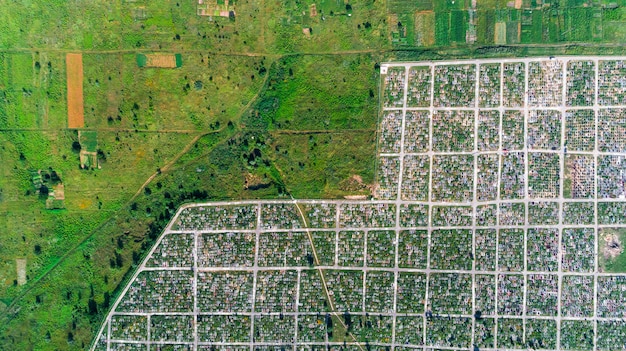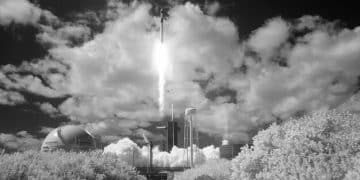Decoding IRA’s Environmental Justice: 2025 Changes Explored

The Inflation Reduction Act’s environmental justice provisions, set to evolve significantly in 2025, aim to channel investments and benefits to communities disproportionately affected by pollution, marking a foundational shift towards equitable climate policy and community empowerment, a critical development for environmental and social equity in the United States.
Understanding the nuances of the Decoding the Inflation Reduction Act’s Environmental Justice Provisions: What Changes Are Coming in 2025? is crucial. This landmark legislation, enacted in 2022, represents a significant federal commitment to addressing climate change and promoting clean energy, but its environmental justice components are particularly noteworthy, promising transformative shifts for historically marginalized communities.
The Foundations of Environmental Justice in the IRA
The Inflation Reduction Act (IRA) emerged as a pivotal piece of legislation, not only for its ambitious climate goals but also for its explicit integration of environmental justice principles. This inclusion marked a significant departure from previous federal climate policies, which often paid lip service to equity without embedding it structurally. The IRA’s approach seeks to rectify historical environmental inequities, particularly in communities of color, low-income populations, and tribal lands that have borne the brunt of pollution and industrial impacts for decades. These communities often face higher rates of asthma, cancer, and other health issues directly correlated with proximity to industrial sites and inadequate infrastructure.
The core idea behind these provisions is to ensure that the transition to a clean energy economy doesn’t inadvertently leave behind or further burden the very communities it aims to protect. Instead, the IRA strives to direct a substantial portion of its benefits – from clean energy investments to pollution reduction initiatives – directly to those who need them most. This involves a multi-faceted approach, encompassing direct funding, tax credits, and community-led initiatives designed to foster local ownership and participation in the clean energy transition. The emphasis is on tangible improvements rather than merely aspirational goals, aiming to create healthier environments and stronger local economies.
Defining Environmental Justice Communities
A critical step in implementing the IRA’s environmental justice provisions has been the clear identification of the communities eligible for these targeted benefits. This is often achieved through sophisticated mapping tools and data analysis that consider various socioeconomic and environmental indicators. Environmental justice communities are typically characterized by a combination of factors, including:
- High poverty rates and economic disadvantage.
- Disproportionate exposure to pollution sources (e.g., superfund sites, active industrial facilities).
- Racial and ethnic minority populations historically marginalized.
- Limited access to clean energy resources or green infrastructure.
These classifications help direct resources effectively, ensuring that funding and programs reach their intended beneficiaries and address long-standing systemic inequalities. The ongoing refinement of these definitions is essential as data evolve and new insights emerge regarding environmental burdens.
The legislative framework of the IRA explicitly acknowledges the disproportionate impacts of climate change and pollution on vulnerable populations. It seeks to weave environmental justice into the fabric of federal policy by embedding requirements and incentives across various programs. This means agencies are not just encouraged but often mandated to consider environmental justice in their funding decisions and project planning. The long-term impact of this foundational shift could be profound, setting a precedent for future climate and infrastructure initiatives to prioritize equity from their inception. It presents a robust framework for tracking and evaluating progress, moving beyond previous, less accountable efforts.
Key Environmental Justice Provisions in the IRA
The Inflation Reduction Act includes a range of specific provisions designed to advance environmental justice, each with its own focus and mechanism for implementation. These provisions aim to address various facets of environmental inequity, from direct pollution mitigation to fostering economic opportunities in underserved areas. The scope of these initiatives is broad, reflecting a comprehensive approach to tackling complex, interconnected issues. Understanding these specific mechanisms is key to appreciating the potential impact of the IRA’s environmental justice goals.
Direct Investment and Grant Programs
A significant component of the IRA’s environmental justice strategy involves direct financial investments and grant programs. These funds are specifically earmarked for projects and initiatives in environmental justice communities. For instance, the Act includes substantial appropriations for the Environmental Protection Agency (EPA) to provide grants for community-led pollution reduction projects, clean air improvements, and climate resilience initiatives. These grants empower local organizations and governments to implement solutions tailored to their specific needs, fostering a sense of ownership and direct positive impact within the community.
- Climate Pollution Reduction Grants: Funds for state, local, and tribal governments to develop and implement plans for reducing greenhouse gas emissions and other air pollutants.
- Environmental and Climate Justice Block Grants: Provides direct financial assistance to community-based organizations and local governments for projects addressing environmental and climate justice issues.
- Clean Ports Program: Investments aimed at reducing emissions from ports, which are often located near overburdened communities, improving air quality and public health.
These programs are structured to ensure that funds flow directly to projects that deliver tangible benefits, such as cleaner air, safer water, and improved public health outcomes, avoiding bureaucratic bottlenecks that might dilute their effectiveness.
Tax Credits and Incentives with Justice Adders
Beyond direct grants, the IRA leverages the power of tax credits to encourage clean energy and sustainable development in environmental justice areas. Many of the extensive tax credits for renewable energy, energy efficiency, and electric vehicles include “environmental justice adders” or bonus credits for projects located in designated communities. This incentivizes developers and businesses to choose these locations for their investments, bringing not only clean energy infrastructure but also job creation and economic growth. This innovative approach recognizes that market forces, when properly directed, can be powerful tools for achieving social and environmental equity.
For example, a solar energy project located in an environmental justice community might receive an additional percentage point on its investment tax credit, making it more financially attractive than a similar project in a non-EJ area. This mechanism drives private sector engagement in environmental justice initiatives. The long-term vision is that these tax credit incentives will catalyze sustainable economic development, creating a virtuous cycle where environmental improvements lead to enhanced economic opportunities for residents. It represents a subtle yet powerful lever for shaping investment patterns.
Community Engagement and Capacity Building
A crucial, yet often overlooked, aspect of the IRA’s environmental justice provisions is the emphasis on community engagement and capacity building. For far too long, environmental decisions have been made without meaningful input from the communities most affected. The IRA aims to change this by providing funding and resources to help environmental justice organizations participate more effectively in decision-making processes, conduct their own research, and advocate for their needs. This empowerment is essential for ensuring that solutions are culturally appropriate and address the actual priorities of residents.
This entails supporting technical assistance, legal aid, and training programs that allow community members to understand complex environmental regulations, negotiate with developers, and monitor project implementation. The goal is to shift from a top-down approach to one that truly involves and is driven by the communities themselves. This focus on building local capacity strengthens the ability of environmental justice communities to advocate for their interests and ensures that their voices are heard throughout the implementation of the IRA.
The comprehensive nature of these provisions reflects a sophisticated understanding of environmental justice challenges. It’s not just about cleaning up pollution; it’s about building resilient, economically vibrant communities that can thrive in a cleaner future. The integration of various financial and structural tools underscores a commitment to systemic change rather than superficial fixes. The effectiveness of these provisions will largely depend on meticulous implementation and ongoing vigilance to ensure that the intended benefits materialize on the ground.
Anticipated Changes and Evolutions in 2025
As we look towards 2025, the implementation of the Inflation Reduction Act’s environmental justice provisions is expected to enter a new phase, characterized by increased clarity, refined guidelines, and a stronger focus on achieving measurable outcomes. While the foundational principles remain, agencies and communities will have had more time to understand the mechanisms, identify best practices, and address initial challenges. This evolution is natural for a comprehensive piece of legislation and reflects an ongoing commitment to maximizing its impact.
Refined Metrics and Reporting Requirements
One of the most significant changes anticipated in 2025 relates to the refinement of metrics and reporting requirements for environmental justice initiatives. Initial implementation phases often involve broad guidelines, but as data accumulates and programs mature, there will be a greater emphasis on specific, measurable outcomes. This could involve more granular reporting on pollution reductions, job creation in environmental justice communities, and the distribution of clean energy benefits. Such detailed reporting would allow for better accountability and provide clear evidence of program effectiveness.
Stakeholders, including community groups and oversight bodies, have advocated for robust reporting that goes beyond simple expenditure tracking. They seek to understand the actual impact on public health, economic development, and environmental quality. The expectation is that by 2025, federal agencies will have developed standardized methodologies for assessing these impacts, leading to a more transparent and results-oriented approach. This enhanced focus on data and metrics will be crucial for demonstrating the long-term success of the IRA’s environmental justice goals and making adjustments where necessary.
Increased Inter-Agency Coordination
The initial rollout of the IRA involved various federal agencies, each responsible for implementing specific provisions relevant to their mandates. By 2025, there is a strong expectation of enhanced inter-agency coordination. This means a more streamlined approach to cross-cutting environmental justice issues, with agencies working more closely together to ensure complementary rather than overlapping efforts. Improved coordination can lead to more efficient use of resources and a more coherent federal strategy for supporting environmental justice communities.
For example, the Environmental Protection Agency (EPA), Department of Energy (DOE), and Department of Housing and Urban Development (HUD) might collaborate more effectively on projects that integrate clean energy infrastructure with affordable housing initiatives in underserved areas. Such collaboration would leverage the expertise and resources of multiple agencies, leading to more holistic and impactful solutions. This integrated approach is essential for tackling the complex and multi-dimensional challenges faced by environmental justice communities.
Emergence of Best Practices and Lessons Learned
By 2025, two years will have passed since the IRA’s enactment, providing sufficient time for various projects and programs to have been attempted and evaluated. This period will inevitably lead to the emergence of best practices and lessons learned from the ground. Communities and implementers will have gained practical experience, identifying what works well and where improvements are needed. This collective knowledge will be invaluable for refining future strategies and ensuring that resources are deployed as effectively as possible.
These lessons will likely be shared through federal guidance, peer-to-peer learning networks, and published case studies, allowing other communities and organizations to benefit from early experiences. This iterative process of learning and adaptation is critical for optimizing the long-term impact of the IRA’s environmental justice provisions. It will transform theory into tangible, scalable solutions, making the benefits widely accessible.
The evolution expected in 2025 signifies a maturation of the IRA’s environmental justice framework. From initial broad strokes, the policy will transition into a more data-driven, coordinated, and evidence-based approach. This shift aims to maximize effectiveness, ensuring that the legislative intent translates into concrete improvements for the communities most in need, setting a precedent for environmental policy.
Potential Opportunities and Challenges for Communities
The Inflation Reduction Act’s environmental justice provisions present both significant opportunities and notable challenges for communities striving to improve their environmental health and economic well-being. Understanding these dynamics is crucial for effective engagement and for maximizing the chances of success in leveraging the IRA’s resources. The path to achieving true environmental justice is complex, requiring strategic planning, robust partnerships, and persistent advocacy.
Seizing New Funding and Investment Avenues
For environmental justice communities, the IRA opens up unprecedented avenues for funding and investment. This includes direct grants, favorable tax credits, and various federal programs designed to channel resources toward pollution reduction, clean energy deployment, and climate resilience. The opportunity here is for communities to proactively identify their needs, develop compelling project proposals, and effectively compete for these funds. This requires a level of organizational capacity that some communities may need to build or enhance.
- Infrastructure Modernization: Funds for upgrading water systems, transportation infrastructure, and other critical services to reduce pollution and increase resilience.
- Clean Energy Transition: Opportunities to develop community-owned solar projects, energy efficiency upgrades for homes and public buildings, and electric vehicle charging infrastructure.
- Workforce Development: Investment in training programs for green jobs, ensuring local residents benefit from the clean energy economy.
These funding streams can be transformative, leading to tangible improvements in air and water quality, reduced energy burdens, and new economic opportunities. The key is for communities to be well-prepared and strategic in their pursuit of these resources, ensuring that projects align with local priorities and have strong community support.
Navigating Bureaucracy and Technical Requirements
While the funding opportunities are immense, navigating the inherent bureaucracy of federal programs and meeting technical requirements can be a significant challenge for smaller, less-resourced community organizations. The application processes can be complex, often requiring detailed technical assessments, financial projections, and environmental impact statements. This can be a major barrier, potentially leading to a disparity in access where larger, more established organizations are better equipped to secure funds.
Addressing this challenge will involve enhanced technical assistance from federal agencies, partnerships between national environmental justice groups and grassroots organizations, and capacity-building initiatives tailored to community needs. Simplification of application procedures and dedicated support channels could also help level the playing field, ensuring that all eligible communities have a fair shot at benefiting from the IRA. The goal is to make these opportunities accessible, not just theoretically available.
Ensuring Equitable Distribution of Benefits
Even when funds are secured, ensuring the equitable distribution of benefits within a community remains a critical challenge. It is essential to guard against “green gentrification,” where environmental improvements inadvertently lead to increased property values and displacement of long-term residents. Community-led planning processes and policies that protect affordable housing are vital to prevent such unintended consequences. The environmental justice movement emphasizes that benefits should accrue directly to the residents who have historically borne the burdens of pollution.
This requires careful project design, transparent decision-making, and continuous engagement with community members throughout the project lifecycle. The aim is to ensure that new clean energy jobs go to local residents, that energy savings benefit low-income households, and that green spaces are accessible and beneficial to everyone. True environmental justice is not just about bringing new investments but about ensuring those investments uplift and empower existing communities without displacing them. The journey is ongoing, requiring vigilance and adaptive strategies from all stakeholders to ensure that the IRA delivers on its promise of a more equitable and sustainable future for all.
Tracking Progress and Accountability Mechanisms
The success of the Inflation Reduction Act’s environmental justice provisions hinges not only on their design and implementation but also on robust mechanisms for tracking progress and ensuring accountability. Given the ambitious goals and significant public investment, it is imperative to establish clear benchmarks and oversight processes to ensure that the intended benefits reach environmental justice communities and that funds are used effectively. This involves a multi-layered approach, from federal reporting to community-led monitoring.
Federal Oversight and Reporting
At the federal level, various agencies are tasked with overseeing the implementation of the IRA’s environmental justice components. This includes collecting data on project locations, demographic information of beneficiaries, and key performance indicators related to pollution reduction and clean energy deployment. Detailed annual reports by agencies involved, such as the EPA and DOE, are expected to provide public accountability regarding how funds are being allocated and the tangible outcomes achieved. These reports will be critical for policymakers and the public to assess the overall impact of the legislation.
Moreover, there will be an emphasis on establishing baselines for environmental quality and socioeconomic indicators in environmental justice communities, allowing for a clear measurement of improvement over time. This approach moves beyond simply tracking expenditures to evaluating actual improvements in health, economic opportunity, and environmental conditions. The federal agencies are expected to refine their data collection and analysis methods by 2025 to provide more comprehensive and transparent reporting.
Community-Led Monitoring and Advocacy
While federal oversight is crucial, community-led monitoring and advocacy play an equally vital role in ensuring accountability. Local environmental justice organizations are uniquely positioned to observe the on-the-ground impacts of IRA-funded projects, identify gaps in implementation, and advocate for adjustments where needed. These groups often have deep knowledge of their communities’ specific needs and challenges, making them invaluable watchdogs. They can provide real-time feedback, ensuring that projects are truly beneficial to local residents and that their concerns are addressed.
This bottom-up accountability complements top-down federal oversight, creating a more robust system. Funding mechanisms within the IRA for capacity building and technical assistance to community organizations are designed to empower them to undertake this critical monitoring role effectively. By 2025, it is anticipated that these community-led efforts will be more sophisticated, utilizing community science tools and partnerships with academic institutions to gather data and build compelling cases for equitable outcomes.
Third-Party Evaluations and Academic Research
Independent third-party evaluations and academic research will also contribute significantly to tracking progress and holding stakeholders accountable. Researchers from universities and non-profit organizations can conduct independent studies to assess the effectiveness of the IRA’s environmental justice provisions, identify unintended consequences, and offer recommendations for improvement. This external scrutiny provides an objective perspective, complementing both federal and community-led efforts.
These evaluations can analyze trends in investment, job creation, public health indicators, and environmental improvements in targeted communities. Their findings can inform policy adjustments, highlight successful models, and expose areas where the IRA might be falling short of its environmental justice goals. By 2025, a growing body of independent analysis is expected to provide a comprehensive picture of the IRA’s impact, ensuring that its transformative potential is fully realized and that lessons learned are applied to future policy initiatives. This continuous cycle of evaluation and adaptation is essential for long-term success.
Long-Term Implications for Environmental Policy
The Inflation Reduction Act’s environmental justice provisions represent more than just a temporary funding injection; they signal a fundamental and potentially enduring shift in how environmental policy is conceived and implemented in the United States. The long-term implications are profound, suggesting a future where equity and justice are not merely add-ons but integral components of climate action and environmental protection. This legislative precedent could reshape policy frameworks for decades to come, moving the nation towards a more just and sustainable future.
Mainstreaming Environmental Justice
Perhaps the most significant long-term implication is the mainstreaming of environmental justice within federal policy, a trend expected to be firmly established by 2025. By explicitly embedding environmental justice objectives and requirements into a major piece of climate legislation, the IRA elevates these considerations from a niche concern to a central tenet of environmental governance. This means that future environmental policies, infrastructure projects, and energy initiatives are more likely to be evaluated not just on their ecological or economic merits but also on their equity implications.
This shift encourages federal agencies to adopt environmental justice as a cross-cutting priority, integrating it into their planning, funding, and regulatory processes. It moves beyond aspirational statements to concrete actions, with dedicated resources and accountability mechanisms. The hope is that this mainstreaming will lead to a default consideration of environmental justice in policy development, ensuring that new environmental burdens are not disproportionately placed on vulnerable communities and that climate solutions deliver widespread benefits.
Increased Focus on Community-Led Solutions
Another critical long-term implication is the increased emphasis on community-led solutions and grassroots empowerment. The IRA’s provisions that direct funds and technical assistance directly to community-based organizations signify a recognition that effective environmental justice outcomes often emerge from the ground up. This approach supports the idea that those closest to the problems are often best equipped to design and implement the solutions. This could foster a landscape where community organizations are stronger, more skilled, and better connected to federal resources.
This increased capacity at the local level could lead to more innovative, culturally appropriate, and sustainable environmental solutions. It also empowers communities to negotiate more effectively with external stakeholders, ensuring that their voices are heard and their priorities are respected in development projects. By 2025 and beyond, this focus could transform the dynamics of environmental decision-making, leading to a more collaborative and equitable partnership between federal government and local communities.
Catalyst for Systemic Change and Equity
Ultimately, the IRA’s environmental justice provisions are intended to be a catalyst for broader systemic change, pushing the nation towards a more equitable society. By addressing the historical inequities that have disproportionately burdened certain communities with pollution and environmental hazards, the Act contributes to dismantling systemic racism and economic injustice. The long-term vision extends beyond environmental improvements to include better health outcomes, economic resilience, and greater political agency for marginalized populations.
This holistic view underscores that environmental justice is intertwined with social and economic justice. The IRA’s mechanisms – from direct investments in clean energy infrastructure to job training programs – are designed to create a foundational shift in how society addresses environmental challenges, viewing them through a lens of fairness and inclusion. While the journey is long, the IRA’s environmental justice provisions represent an unprecedented opportunity to build a more just, healthy, and sustainable future for all Americans, setting a powerful precedent for future policy interventions on a global scale.
Addressing Potential Criticisms and Future Challenges
Despite its groundbreaking provisions, the Inflation Reduction Act’s environmental justice components are not without potential criticisms and future challenges. A truly effective policy must anticipate these hurdles and adapt strategically to ensure its long-term success. Addressing these concerns proactively is essential for maintaining stakeholder trust, ensuring equitable outcomes, and continuously improving the implementation process. The path to environmental justice is iterative, requiring constant vigilance and a willingness to learn and adjust.
Risk of Green Gentrification and Displacement
One significant criticism and a persistent future challenge revolve around the risk of “green gentrification” and displacement. While investments in clean energy infrastructure and environmental remediation bring significant benefits, they can also inadvertently increase property values and make housing unaffordable for long-term, low-income residents. Without robust anti-displacement measures, the very communities intended to benefit could be forced out as their neighborhoods become more desirable.
To mitigate this, future efforts will need to emphasize policies such as community benefit agreements, affordable housing trusts, and rent stabilization measures as integral parts of environmental justice initiatives. Ensuring that new jobs are genuinely accessible to and filled by local residents is also key. The challenge is to ensure that environmental improvements translate into increased quality of life and economic security for existing residents, not their removal. This requires a nuanced understanding of local dynamics and tailored solutions.
Ensuring Access for Grassroots Organizations
Another crucial challenge is ensuring that funding and technical assistance truly reach smaller, grassroots environmental justice organizations, which often have the deepest community ties but limited capacity to navigate complex federal grant applications. Critics sometimes point out that larger, more established non-profits or government entities might be better positioned to secure a larger share of the funds, potentially undermining the IRA’s stated goal of empowering frontline communities.
Future refinements will need to focus on streamlining application processes, offering more direct and accessible technical assistance, and potentially setting aside specific funding pools for grassroots initiatives. Building genuine partnerships between federal agencies and community leaders can also help bridge this gap, ensuring that the necessary resources flow to those who need them most and can put them to best use. Simplicity and accessibility are vital for broad participation.
Sustaining Political Will and Funding Beyond 2025
A long-term challenge for any significant legislative initiative is sustaining the political will and dedicated funding beyond the initial years. While the IRA provides substantial appropriations, ensuring that environmental justice remains a priority for future administrations and Congresses will be critical. Political landscapes can shift, and priorities may change, potentially impacting the continuity and growth of these vital programs.
Advocacy groups and environmental justice coalitions will play a critical role in continually reminding policymakers of the ongoing needs and the successes achieved. Demonstrating tangible, positive impacts from the IRA’s provisions will be essential for building a strong case for continued investment. The enduring challenge is to embed environmental justice so deeply into federal policy and public consciousness that it becomes an irreversible commitment, transcending partisan divides and securing a truly equitable environmental future for the nation. This battle for mindshare and continued commitment is paramount.
| Key Aspect | Brief Description |
|---|---|
| 🌿 Targeted Investments | Direct funds and tax credits for projects in disproportionately burdened communities. |
| 📊 Refined Metrics (2025) | Expect clearer reporting on pollution reduction and equity outcomes from 2025. |
| 🤝 Community Empowerment | Emphasis on community-led solutions and capacity building for local groups. |
| 🔄 Systemic Policy Shift | IRA establishes environmental justice as a core principle for future environmental policy. |
Frequently Asked Questions About IRA Environmental Justice
▼
The primary goals involve directing significant climate and clean energy investments to communities historically overburdened by pollution. This includes reducing environmental hazards, improving public health, fostering economic opportunities through green jobs, and empowering local communities to participate in decision-making processes, ultimately striving for a more equitable distribution of environmental benefits.
▼
Environmental justice communities are generally identified based on several factors, including high percentages of low-income, minority, or tribal populations, combined with disproportionate exposure to pollution or other environmental hazards. Federal agencies use mapping tools and data to precisely delineate these areas, ensuring that resources and benefits are targeted effectively to those most in need of environmental remediation and investment.
▼
In 2025, communities can anticipate more refined metrics for tracking impact, leading to clearer reporting on outcomes like pollution reductions and job creation. There’s also an expectation of increased inter-agency coordination for more streamlined project implementation and the wider dissemination of best practices from early pilot programs, making it easier for communities to access and leverage funds efficiently.
▼
While the IRA offers substantial benefits, it includes provisions encouraging equitable outcomes through community-led planning and local labor requirements. However, active measures like community benefit agreements and affordable housing policies are crucial to combat potential green gentrification and displacement. The focus is on ensuring existing residents benefit from improvements without being priced out of their revitalized neighborhoods, highlighting the need for holistic planning.
▼
Community organizations are central to the IRA’s environmental justice strategy. They are critical in identifying local needs, developing project proposals, and monitoring implementation to ensure benefits reach their target audiences. The Act provides funding for capacity building and technical assistance, empowering these groups to engage effectively with federal programs and advocate for their interests, fostering a bottom-up approach to environmental justice.
Conclusion
The Inflation Reduction Act’s environmental justice provisions mark a transformative moment in U.S. environmental policy, establishing a robust framework for equitable climate action. As 2025 approaches, the anticipated refinements in metrics, increased inter-agency collaboration, and the emergence of best practices promise to enhance the effectiveness of these groundbreaking initiatives. While challenges like green gentrification and equitable access to funding persist, the IRA’s foundational commitment to environmental justice represents a powerful catalyst for systemic change, aiming to deliver tangible, lasting improvements for historically marginalized communities and set a new precedent for inclusive policy-making.





